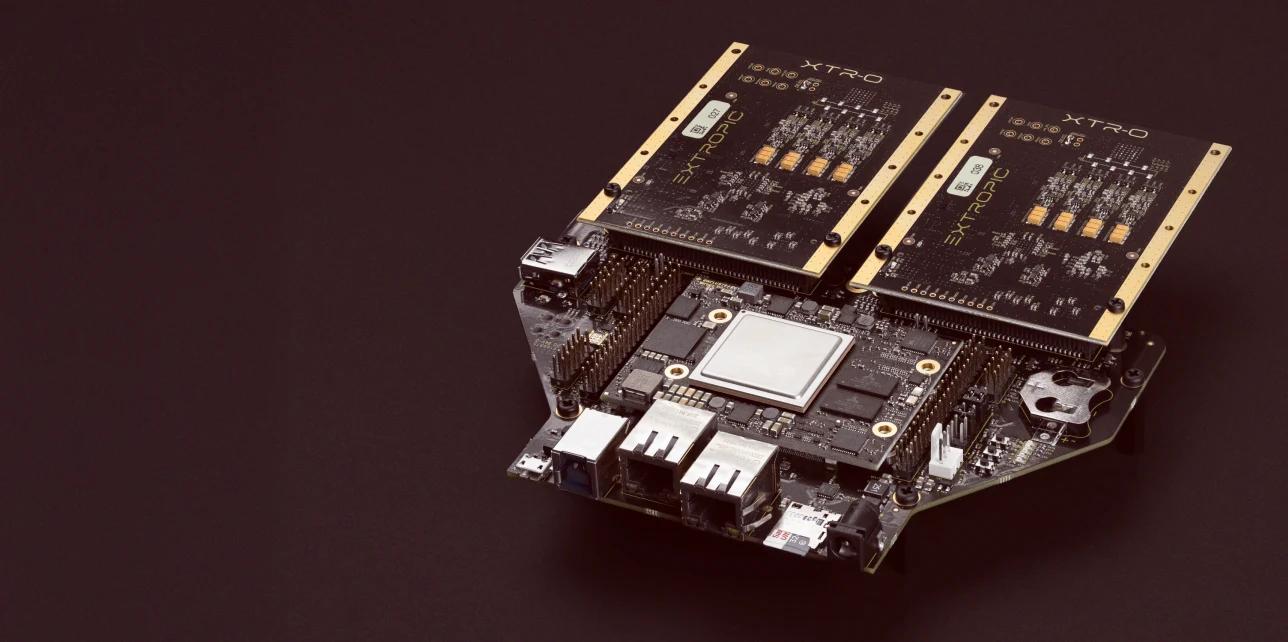Extropic's Thermodynamic Computers: A New Paradigm for Energy-Efficient AI
Extropic is pioneering a radical shift in AI computing through thermodynamic computers powered by Thermodynamic Sampling Units (TSU), promising dramatically reduced energy consumption and a fundamentally different approach to computational processing.

A Radical Shift in AI Computing Architecture
Extropic is pursuing an unconventional path to solving one of AI's most pressing challenges: energy consumption. Rather than optimizing traditional silicon-based architectures, the company is building thermodynamic computers that leverage physical principles to perform computation in fundamentally different ways. This approach, centered on Thermodynamic Sampling Units (TSU), represents a departure from decades of incremental improvements to conventional processors.
The core innovation lies in harnessing thermodynamic processes—specifically controlled energy dissipation and heat flow—as computational primitives. Unlike traditional computers that rely on deterministic logic gates switching between discrete states, thermodynamic computers exploit probabilistic sampling and reversible computing principles to perform inference and optimization tasks with substantially lower energy overhead.
Understanding Thermodynamic Sampling Units
Thermodynamic Sampling Units form the foundation of Extropic's architecture. These units operate by allowing systems to naturally explore solution spaces through controlled thermal dynamics, rather than exhaustively computing every possible state. This probabilistic approach is particularly well-suited to the sampling and optimization problems central to modern machine learning.
Key characteristics of this approach include:
- Energy efficiency: By leveraging natural thermodynamic processes rather than forcing deterministic computation, TSUs consume significantly less energy per operation
- Parallelism: Thermodynamic systems naturally explore multiple solution paths simultaneously
- Scalability: The physics-based approach scales differently than traditional computing, potentially offering advantages as problem complexity increases
- Novel inference paradigms: The architecture enables new ways to structure neural networks and probabilistic models
Implications for AI Infrastructure
The potential impact extends beyond mere efficiency gains. If thermodynamic computers can deliver comparable or superior performance to traditional systems while consuming a fraction of the energy, the economics of AI infrastructure transform fundamentally.
Current large language models and deep learning systems consume enormous amounts of electricity—a constraint that limits deployment, increases operational costs, and raises environmental concerns. A technology that could reduce this footprint by orders of magnitude would reshape the industry's trajectory.
Extropic's approach also suggests that future AI systems might not follow the path of ever-larger models trained on ever-larger datasets with ever-more compute. Instead, thermodynamic computing could enable different scaling laws, where efficiency gains come from architectural innovation rather than brute-force resource accumulation.
Current State and Challenges
Extropic has developed prototype systems, including the X0 and XTR-0 platforms, demonstrating proof-of-concept for thermodynamic computing principles. However, translating laboratory demonstrations into production systems capable of competing with established GPU and TPU infrastructure remains a significant engineering challenge.
The company must address several hurdles:
- Demonstrating that thermodynamic computers can match or exceed the performance of conventional systems on real-world AI workloads
- Scaling from prototype to production-grade hardware
- Developing software ecosystems and programming models suited to thermodynamic architectures
- Competing against entrenched players with massive resources and established market positions
The Broader Context
Extropic's work reflects growing recognition that incremental improvements to traditional computing architectures may be insufficient to meet future AI demands. The industry is exploring multiple alternative approaches—from analog computing to photonic systems—each betting that physics-based computation offers advantages over conventional digital logic.
If successful, thermodynamic computers could represent a genuine paradigm shift, not merely an incremental improvement. The stakes are high: whoever cracks efficient, scalable AI computing stands to reshape the industry's competitive landscape.
Key Sources
- Extropic official documentation on Thermodynamic Sampling Units and X0/XTR-0 platforms
- Company research on physics-based computing architectures for AI inference and optimization
The thermodynamic computing approach remains early-stage, but its potential to fundamentally alter AI's energy economics makes it one of the most significant architectural innovations in development today.


